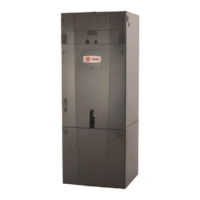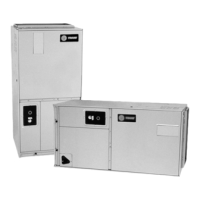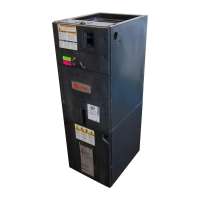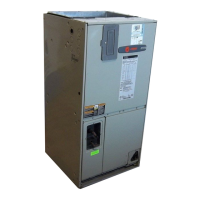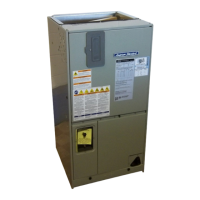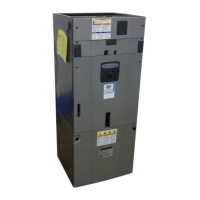BCX-SVX002A-EN
105
Table 34. Zone sensor thermistor curve (Resistance in Ohms) (continued)
°C °F R °C °F R °C °F R °C °F R
11 51.8 19028 36 96.8 6248 61 141.8 2397 86 186.8 1041
12 53.6 18139 37 98.6 6006 62 143.6 2309 87 188.6 1009
13 55.4 17297 38 100.4 5777 63 145.4 2225 88 190.4 978
14 57.2 16499 39 102.2 5559 64 147.2 2145 89 192.2 948
15 59 15743 40 104 5352 65 149 2070 90 194 920
16 60.8 15025 41 105.8 5156 66 150.8 1998 91 195.8 892
17 62.6 14345 42 107.6 4969 67 152.6 1929 92 197.6 865
18 64.4 13700 43 109.4 4791 68 154.4 1864 93 199.4 839
19 66.2 13087 44 111.2 4621 69 156.2 1802 94 201.2 814
20 68 12505 45 113 4460 70 158 1742 95 203 790
21 69.8 11953 46 114.8 4306 71 159.8 1686 96 204.8 767
22 71.6 11428 47 116.6 4160 72 161.6 1632 97 206.6 744
23 73.4 10929 48 118.4 4020 73 163.4 1580 98 208.4 722
24 75.2 10455 49 120.2 3886 74 165.2 1531 99 210.2 701
Space Temperature Measurement
Trane zone sensors use a 10kΩ thermistor to measure the
space temperature. Typically, zone sensors are wall-
mounted in the room and include a space temperature
thermistor. As an option, the zone sensor can be unit-
mounted with a separate space temperature thermistor
located in the unit’s return air stream. If both a hard-wired
and communicated space temperature value exist, the
controller ignores the hard-wired space temperature input
and uses the communicated value.
External Setpoint Adjustment
Zone sensors with an external setpoint adjustment (1kΩ)
provide the controller with a local setpoint (50°F to 85°F or
10°C to 29.4°C). The external setpoint is exposed on the
zone sensor’s front cover.
When the hard-wired setpoint adjustment is used to
determine the setpoints, all unit setpoints are calculated
based on the hard-wired setpoint value, the configured
setpoints, and the active mode of the controller. The hard-
wired setpoint is used with the controller’s occupancy mode
(occupied, occupied standby, or unoccupied), the heating
or cooling mode, the temperature deadband values, and
the heating and cooling setpoints (high and low limits) to
determine the controller’s active setpoint.
When a building automation system or other controller
communicates a setpoint to the controller, the controller
ignores the hard-wired setpoint input and uses the
communicated value. The exception is the unoccupied
mode, when the controller always uses the stored default
unoccupied setpoints. After the controller completes all
setpoint calculations, based on the requested setpoint, the
occupancy mode, the heating and cooling mode, and other
factors, the calculated setpoint is validated against the
following setpoint limits:
• Heating setpoint high limit
• Heating setpoint low limit
• Cooling setpoint high limit
• Cooling setpoint low limit
These setpoint limits only apply to the occupied and
occupied standby heating and cooling setpoints. These
setpoint limits do not apply to the unoccupied heating and
cooling setpoints stored in the controller’s configuration.
When the controller is in unoccupied mode, it always uses
the stored unoccupied heating and cooling setpoints.The
unit can also be configured to enable or disable the local
(hard-wired) setpoint. This parameter provides additional
flexibility to allow you to apply communicated, hard-wired,
or default setpoints without making physical changes to the
unit.
Similar to hard-wired setpoints, the effective setpoint value
for a communicated setpoint is determined based on the
stored default setpoints (which determines the occupied
and occupied standby temperature deadbands) and the
controller’s occupancy mode.
Fan Switch
The zone sensor fan switch provides the controller with an
occupied (and occupied standby) fan request signal (Off,
Low, Medium, High, Auto). If the fan control request is
communicated to the controller, the controller ignores the
hard-wired fan switch input and uses the communicated
value. The zone sensor fan switch input can be enabled or
disabled through configuration using the Rover service
tool. If the zone sensor switch is disabled, the controller
resorts to its stored configuration default fan speeds for
heating and cooling, unless the controller receives a
communicated fan input.
Start-Up
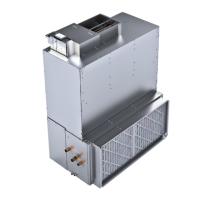
